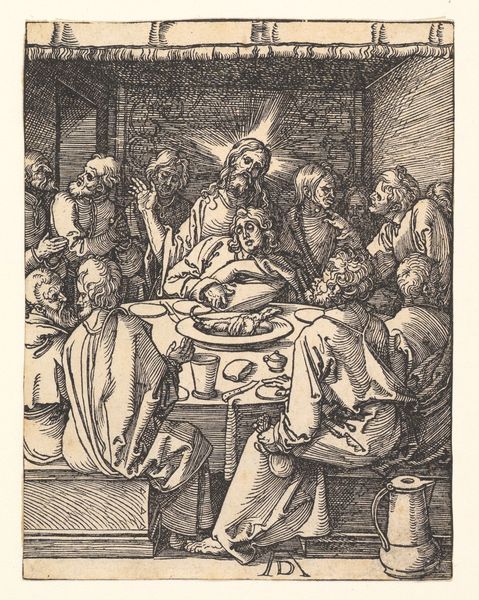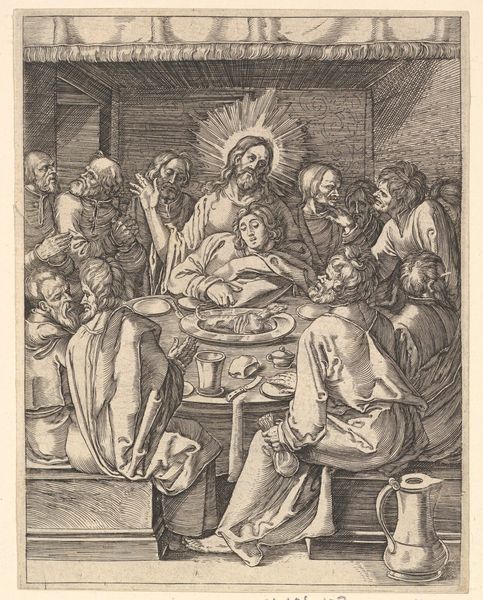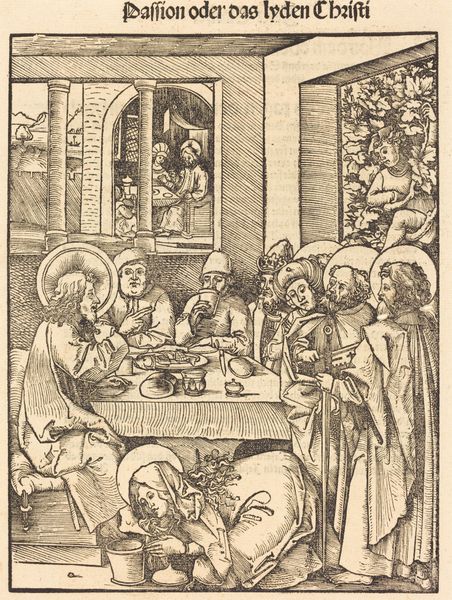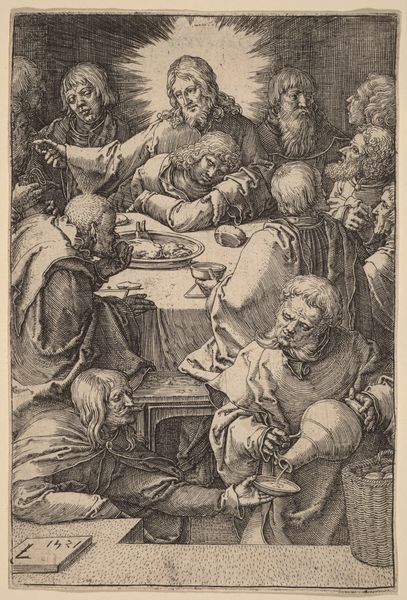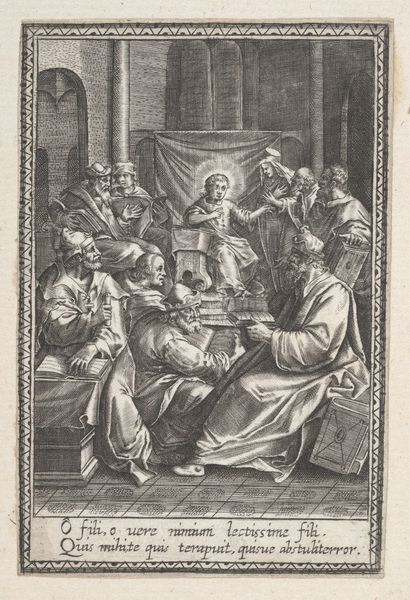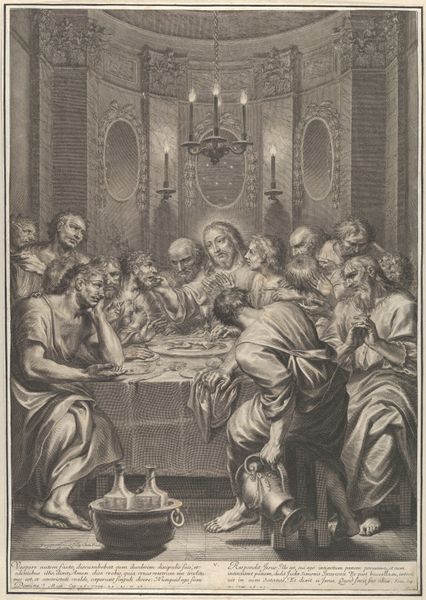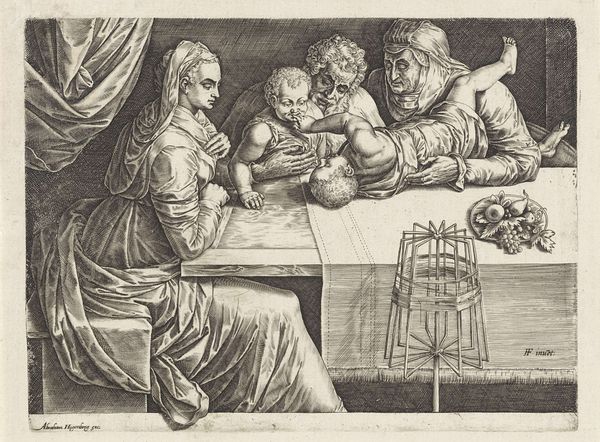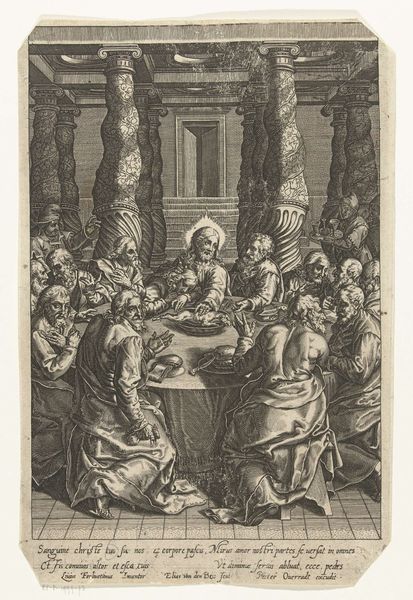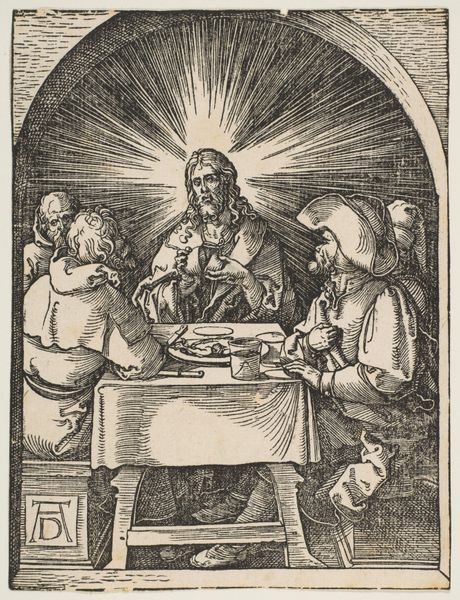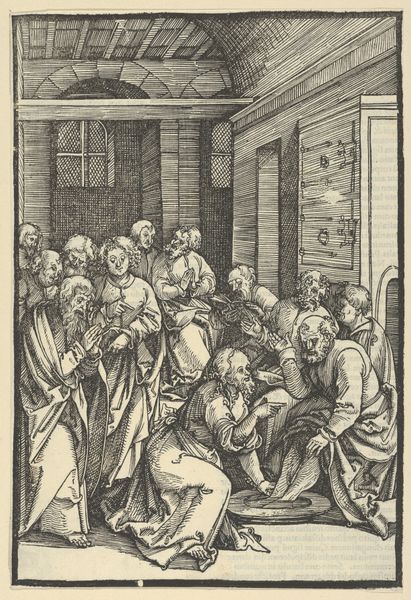
The Last Supper; The last supper with Christ sitting in the center embracing John 1495 - 1539
0:00
0:00
drawing, print, engraving
#
drawing
# print
#
figuration
#
history-painting
#
italian-renaissance
#
engraving
Dimensions: Sheet: 5 1/16 × 4 1/16 in. (12.8 × 10.3 cm)
Copyright: Public Domain
Curator: Before us, we have "The Last Supper; The last supper with Christ sitting in the center embracing John", an engraving by Marcantonio Raimondi, dating from 1495 to 1539. Editor: My immediate impression is one of incredible intimacy rendered through a rather stark, almost architectural, linework. There's a quiet tension hanging in the air. Curator: Indeed, the detailed engraving, done in print, is compelling. The artist skillfully manipulates line and tone to create depth, and what is most interesting is that the work showcases Italian Renaissance aesthetics translated via the relatively new printmaking technologies available at the time. It reflects an interest in democratizing art production. Editor: I think the placement of John, leaning affectionately against Christ, disrupts any illusion of egalitarianism that might have been implied. I’d say, through a postcolonial lens, this positioning, with its emphasis on intimacy and betrayal, also exposes an internal conflict within a tightly-knit group—the seeds of its future undoing. It begs the question, what narratives are favored, and whose voices are further marginalized in this depiction? Curator: Perhaps the focus is less about inclusion and more about production, focusing instead on a visual product generated for a specific, consuming audience that engaged in visual culture. The texture of each garment, the way light catches on the metallic jugs and plates, even the act of reproducing this image using mass printing, creates access to the story of the Last Supper through tactile and sensory detail. It is a very process-driven work, showcasing that the creation of images has changed irrevocably and that the impact is immediate. Editor: Agreed, there’s an undoubtable intimacy offered, and an undeniably gendered subtext worth questioning within the image itself. That is precisely what makes this engraving, and similar works of that time, continue to offer much to chew on today. Curator: It reminds me to contemplate both how art can serve both as propaganda and artistic investigation and production at once. Editor: Absolutely, and considering its subject matter, let us always reconsider not just the who, what, when and where, but more crucially, the why, from a historical and sociopolitical perspective.
Comments
No comments
Be the first to comment and join the conversation on the ultimate creative platform.
